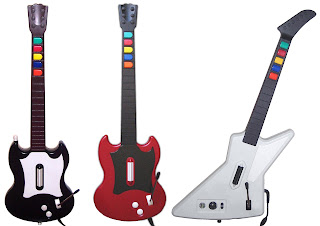
 Most recently, Amazon has built relationships with Nintendo's WiiWare service and Microsoft's Xbox Live while also offering a casual game store and a used game service.
Most recently, Amazon has built relationships with Nintendo's WiiWare service and Microsoft's Xbox Live while also offering a casual game store and a used game service.How recently you might ask? Amazon has unveiled these four separate initiatives in the last three months.
Amazon entered the traditional retail game space in 2006 and announced its first new change in February of 2009 with a casual PC game download service. Utilizing its massive scale, the service launched with 600 available titles and was a clear first effort for Amazon in the direct-download channel.
In early March the retailer unleashed an even more interesting initiative--a centralized used game program. In the past, Amazon had utilized its Marketplace to allow individual, smaller sellers to post and sell used games but the service was never fully coordinated by Amazon. The new system will offer Amazon store credit when users send in "good condition" used games which will then be sold by Amazon directly.
This move presents a potentially huge threat to used-game industry leader Gamestop and other smaller retailers. Although Gamestop abandoned their attempt at the mail-in used game business, Amazon aims to grab market share quickly by offering higher trade-in values and cheaper used prices. In addition, used games offer a substantially higher profit margin than new game sales--an industry characteristic that could substantially add to Amazon's bottom line. In my opinion, the success of this program must be measured according to net sales increase as simple cannibalization of new game sales will not achieve substantial revenue growth.
What came next for Amazon? In April the retailer hit consumers with a two-punch combo of Xbox Live and WiiWare downloads. These moves offer digital downloads for the Wii and Xbox 360 which presents an interesting departure from the traditional closed market for console downloads. The services add no exclusive content but contribute to a fully developed retail destination for gamers. With the exception of the Playstation 3 download market, Amazon has now built a retail hub that includes new and used game physical purchases alongside digital downloads.
Amazon achieved success in other media formats by offering a complete set of purchase options and, after a busy three months, they have built a similarly comprehensive retail source for gamers.







 Mario became the definition of the everyman and evolved into a shared entertainment experience for millions. "Community", the holy grail of social marketing, is based on exactly that--a series of shared experiences. Mario, in his infinite simplicity, is a universal avatar. He is the virtual representation of very individual at home holding an
Mario became the definition of the everyman and evolved into a shared entertainment experience for millions. "Community", the holy grail of social marketing, is based on exactly that--a series of shared experiences. Mario, in his infinite simplicity, is a universal avatar. He is the virtual representation of very individual at home holding an 
